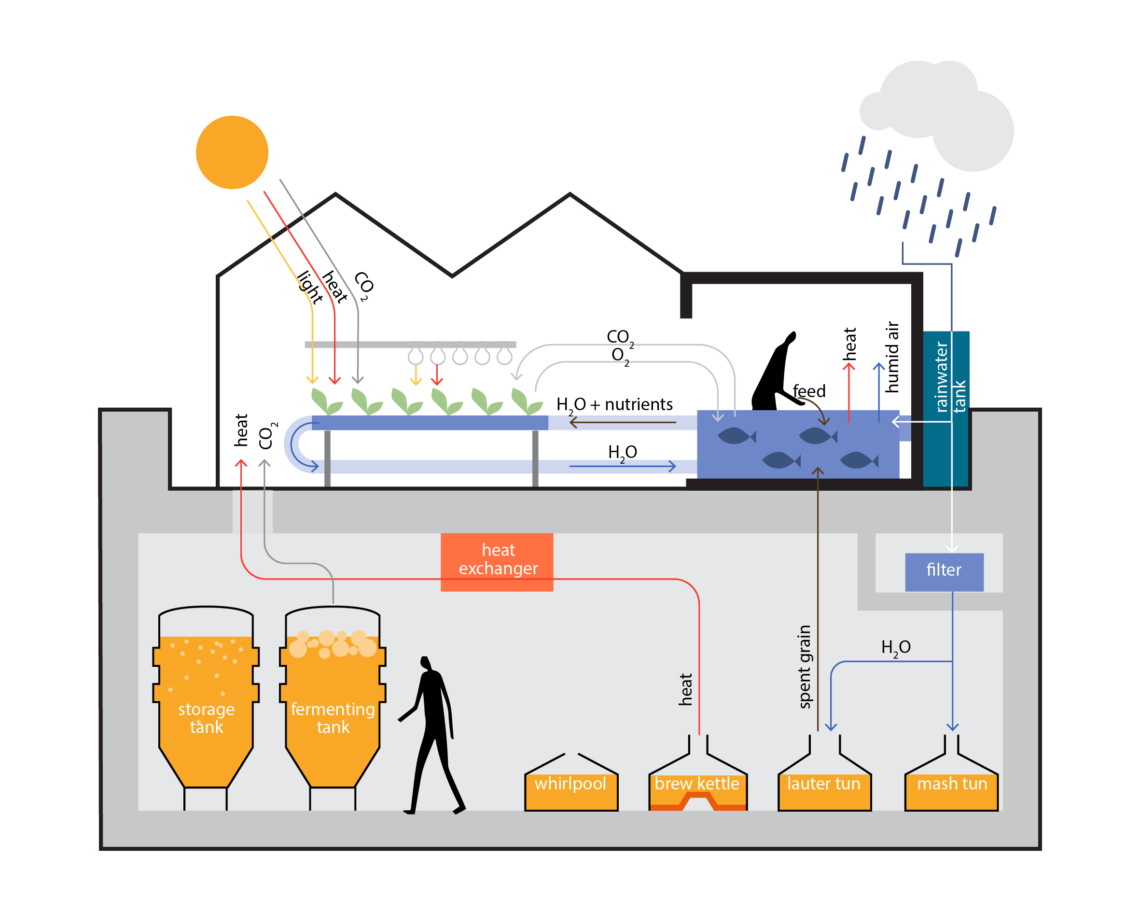December 20, 2019
Building an Ecosystem: Integrating Rooftop Aquaponics with a Brewery to Advance the Circular Economy
Conference paper for 108th Annual Meeting of the Association of Collegiate Schools of Architecture, Virtual Conference

Figure 5: Aquaponic rooftop greenhouse and brewery systems combined; preliminary interaction diagram.
Abstract
As cities transform to manage the food-water-energy nexus sustainably, architectural design that is intimately involved with the industrial processes that buildings host can play a crucial role in closing the urban resource loop. Urban agriculture projects, such as aquaponics, that depend on technological innovation and an ecosystem approach are becoming more common. To be implemented in cities, aquaponics must be examined from the built environment perspective – most commercial-scale aquaponic farms require climate control to produce food year-round. In the interest of achieving a fully circular urban economy, aquaponic farms’ inputs and outputs can be integrated with those of other urban facilities. Through literature and case study review, this paper investigates the potential integration of aquaponic greenhouses with brewery spaces to make use of the circular nature of this growing system. Potential resources that can be linked between integrated greenhouse aquaponic growing and brewing include water, heat and energy, and organic matter. Careful design and a wide range of innovative technologies can be used to recycle growing and brewing process byproducts and reduce the overall energy and water demand while producing fish, crops, and beer.
Citation
Horn, E., Proksch, G. (2020) Building an Ecosystem: Integrating Rooftop Aquaponics with a Brewery to Advance the Circular Economy. In Open: Proceedings of the 108th ACSA Annual Meeting, San Diego, CA, March 12-14, 2020, Washington, DC: ACSA Press, 2020, postponed to ACSA108 Virtual Conference, June 15-19, 2020.
